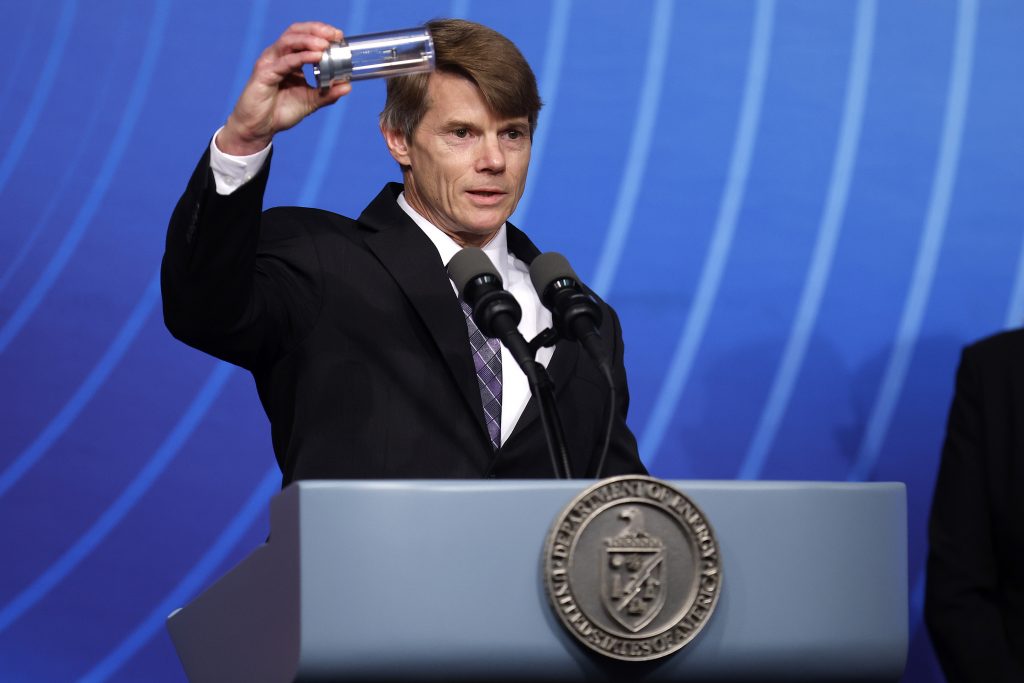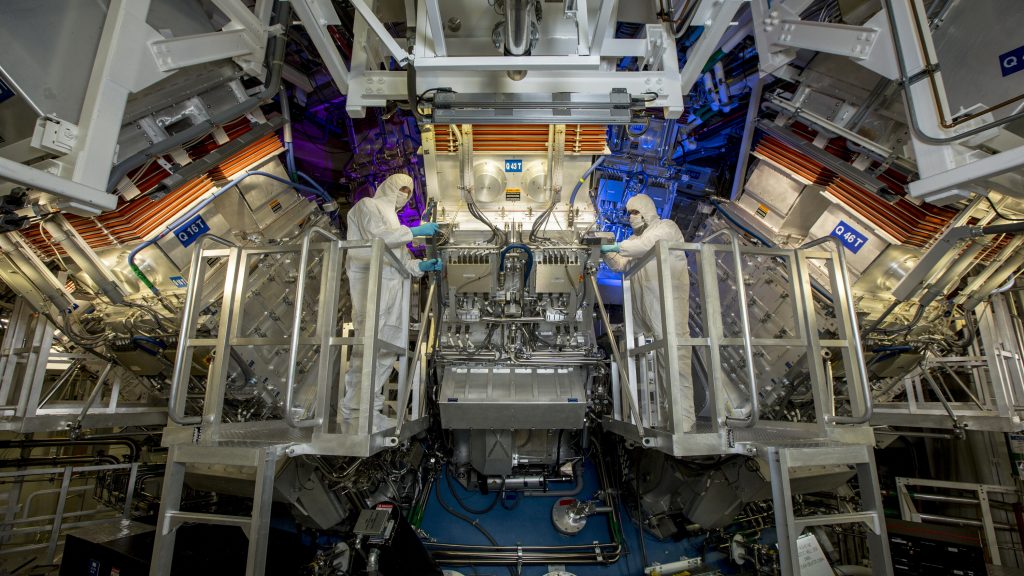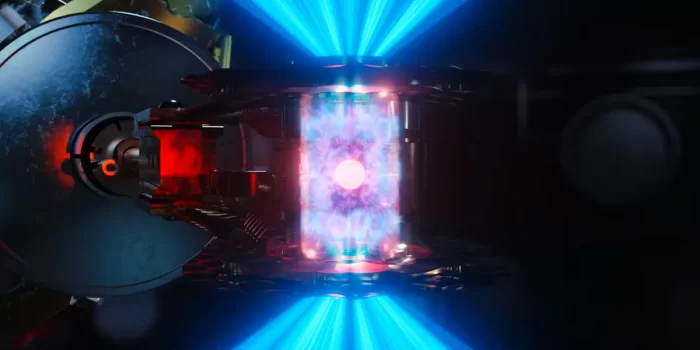Scientists at the US Department of Energy’s flagship laser facility set a new record earlier this month when they generated more than 10 quadrillion watts of fusion power in a fraction of a second—roughly 700 times the producing capacity of the whole US electrical grid at any one time. The discovery has rekindled hopes that the long-struggling National Ignition Facility (NIF) may achieve its objective of creating more energy than it consumes in a sustained fusion reaction.
At the National Ignition Facility (NIF), the Lawrence Livermore Lab team used inertial confinement to target a small sphere of deuterium-tritium fuel with 192 lasers, generating X-rays inside a gold can and imploding the sphere of fuel. The lasers released 2.1 megajoules of energy and received 3.15 megajoules in return, resulting in a fusion energy gain greater than one. Diagnostic techniques developed by the MIT Plasma Science and Fusion Center confirmed this conclusion. Because it can reliably interpret neutron signals from an implosion, the PSFC’s magnetic recoil neutron spectrometer (MRS) was one of the major technologies used to determine the absolute neutron yield from the experiment.

The US$3.5 billion facility, located at Lawrence Livermore National Laboratory in California, was not intended to serve as a power-plant prototype but rather to investigate fusion processes at the core of thermonuclear weapons. After the US banned underground nuclear testing at the end of the cold war in 1992, the energy department proposed the NIF as part of a larger science-based stockpile stewardship program designed to test the dependability of the country’s nuclear weapons without detonating any of them.
Scientists are cautiously hopeful that the NIF will live up to its promise, allowing physicists to better comprehend the commencement of nuclear fusion—and hence the explosion of nuclear weapons. “At the moment, that’s essentially the scientific question for us,” says Mark Herrmann, Livermore’s deputy director for fundamental weapons physics. “Where should we go?” “Can we go any further?”

Some critics have questioned whether scientists need the facility to maintain the United States’ nuclear weapons. They say the stewardship program has already bolstered confidence in the stockpile within the NNSA and point out that the agency is now proposing to build what are effectively new nuclear weapons rather than simply maintaining the current cache with minimal changes.


